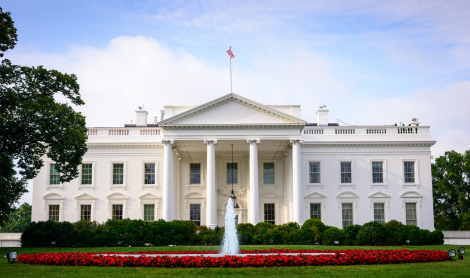The federal government has allocated unprecedented new resources to K-12 schools in response to the Coronavirus pandemic, much of it via Elementary and Secondary School Emergency Relief (ESSER) funds. These new dollars, if used well, have the potential to benefit students and support the viability of schools hit hard financially by the pandemic.
These new dollars will also trigger new requirements for many schools, particularly a Single Audit. If you’re wondering just what exactly that means for you as authorizer, and for the schools you authorize, read on. While we’ve been hearing about and seeing these funds flow to schools now for a while, we thought a quick refresher with some perspective from a charter school auditor would be useful.
In total, ESSER provides nearly $190 billion[1] to States and school districts “to help safely reopen and sustain the safe operation of schools and address the impact of the coronavirus pandemic on the nation’s students.” This is a LOT of money. Some of it will end up going to charter schools and benefiting charter school students. How a charter school receives those funds depends on its LEA structure.[2]
ESSER allocations are made to LEAs based largely on FY2019 Title I, Part A allocations; in some cases, schools may receive ESSER funds equaling as much as 10 times their typical Title I, Part A allocation. While not all ESSER funds will be allocated or spent in one fiscal year, many charter schools that previously received less than $750,000 in federal funds will surpass that threshold and therefore be subject to a Single Audit.
Here’s an example: Metro Schools, a charter school in Minneapolis, MN, serves about 400 students grades 5 through 12. The school receives substantial federal dollars, since approximately 50% of students are English Learners, 15% receive special education services, and 90% are eligible for free/reduced price lunch. In FY20, the school received about $562,000 in federal funds, and therefore, was not subject to the Single Audit. But now, Metro Schools is projected to receive the following additional federal funds:
- ESSER I (CARES) – $126,838 (must be obligated by 9/30/21)
- ESSER II (CRRSA) – $596,651 (must be obligated by 9/30/22)
- ESSER III (ARP) – $1,339,994 (must be obligated by 9/30/23)
Depending on when the school spends these resources, it will likely surpass $750,000 in federal funds in FY21, most certainly in FY22 and FY23, and perhaps in FY24 as well, triggering the Single Audit in these years.
To get clarity on this, I spoke to one of the most respected auditors of Minnesota charter schools—not to mention districts and cities: Jim Eichten, Managing Partner at Malloy, Montague, Karnowski, Radosevich & Co., P.A. (MMKR), CPA. Here’s what I learned[3]:
What exactly is a Single Audit and how is it different from a regular audit?
To understand the Single Audit, it is important to first understand what a regular audit is. The regular financial audit of a charter school is an independent examination of the organization’s financial statements by a Certified Public Accountant (CPA) to ensure the school’s records are a fair and accurate representation of the school’s financial transactions and financial status. During the independent audit, the auditor will also review the organization’s financial statements to determine whether they adhere to “generally accepted accounting principles” (commonly referred to as GAAP). Auditors also evaluate the effectiveness of a school’s internal controls: the policies and processes implemented by the school to ensure the reliability and integrity of the financial information and to prevent fraud.
Independence of the external auditor means independence from parties that have an interest in the results published in the financial statements of the school, such as management, suppliers, and other third parties that work for or with the school. Outside of technical competence, auditor independence is one of the most important factors in establishing the credibility of the audit opinion.
The Single Audit is an audit guided by the Federal Office of Management and Budget’s (OMB) Uniform Guidance, triggered when the school expends more than $750,000 of federal funds. The Single Audit’s objective is to provide assurance to the U.S. federal government as to the management and use of such funds by recipients.
What does a Single Audit entail?
A Single Audit encompasses an examination of the school’s:
-
- financial records
- financial statements
- federal award transactions and expenditures
- general management of its operations
- internal control systems and
- federal funds received during the school’s fiscal year.
The Single Audit is divided into two areas:
-
- Compliance: the study, understanding, testing, and evaluation of the school with respect to use of federal funds, operations, and compliance with laws and regulations specifically related to the federal awards received and spent.
- Financial: exactly like a regular audit but includes the audit of the schedule of expenditures of federal awards and accompanying notes to this schedule.
What are the possible results of a Single Audit?
The auditor will report audit findings and any questioned costs. Findings could include those related to internal controls over the programs the auditor tested; significant instances of misuse of federal program dollars; or noncompliance with the provisions of Federal statutes, regulations, or the terms and conditions of Federal awards.
The auditor also will report known questioned costs greater than $25,000. (Questioned costs under this threshold would likely trigger an internal control finding, but they will not be reported specifically.)
What can Single Audit findings for schools and authorizers?
Many negative consequences may result from an audit with a high number of findings. They range from the grantee having to pay back disallowed costs to suspension of grants altogether. A school may also be identified as high risk, which increases the risk of findings from additional and future audits of the school. It may even impact the organization’s ability to win future awards. Authorizers would likely increase their oversight in such an instance and perhaps initiate an intervention.
Should a school or authorizer expect to see findings in a Single Audit?
When a school has the policies, procedures, and internal controls in place to meet the required federal grant and Single Audit standards, the audit result is “no findings.”
But in reality, schools may not have the required policies and practices in place, and therefore, it is not uncommon for schools going through their first Single Audit to have findings. This can be due to a variety of factors, such as changes in a school’s organizational structure, turnover in personnel, changes in laws and regulations, and/or revised federal grant requirements. Schools that have not been subject to a Single Audit in the past can also simply be unaware of requirements and therefore not have needed policies or practices in place.
Should a school or authorizer be concerned about findings?
Audits do result in findings, so the fact alone that a school has findings is not necessarily a concern. Findings could include lack of a needed policy or timeliness of a report, for example. Typically, the school and authorizer should focus on how the school plans to change its operation so the findings are not repeated.
As part of every Single Audit of federal awards, the school is required to prepare and submit a written corrective action plan (CAP) for any audit findings. This CAP must be written so the actions taken by the school actively eliminate the findings if the CAP is implemented correctly. The CAP must identify an individual responsible for the implementation and oversight of the plan: someone who was involved in the audit process, has a full understanding of the audit finding, and is fully aware of the changes necessary to eliminate the finding in the future
Some findings, however, should create concern, particularly if they relate to inappropriate use of federal funds. Such a finding likely indicates either insufficient understanding on the appropriate use of the particular funding source, or possibly intentional abuse of public dollars. While a CAP will still be required in this case, additional intervention by the authorizer could be warranted.
What else should charter schools and authorizers bear in mind?
This may take time and resources. Given the significant increase in required Single Audits, schools should consider how this might impact their audits. Authorizers, in turn, should understand that schools may have to invest additional time and resources to understand the rules and regulations related to spending these new funds, and also to strategically determine how best to spend these dollars to derive the greatest benefit for students.
Communication is essential. Not all auditors complete Single Audits, nor do all auditors have that expertise. If they do, they may not have the required staff to complete audits by statutory deadlines, given the increased number of Single Audits. There could also be greater expectations on school staff to prepare for the Single Audit. In short, the best thing school leadership can do is communicate with its auditor to address these and other questions. Authorizers can encourage their schools to have such communication or perhaps even host information sessions for schools. The time and effort invested on the front end will pay dividends for a smoother audit.
Summary of Single Audit Guideposts for Authorizers
ESSER dollars and audits—like school finance in general—is fundamentally about ensuring students learn and are well. These new federal dollars bring new opportunities to do just that. Authorizers’ most important role is to support schools in thinking and acting strategically about the use of these new funds to ensure they indeed benefit students.
But along with these dollars come some new requirements. Many schools will have a new audit burden, and some will have audit findings. By using professional judgement and seeking guidance as needed, authorizers can keep the focus on students and also help schools focus their resources there as well.
These guideposts can help authorizers successfully partner with schools:
- Authorizers should understand these requirements.
- Authorizers should provide guidance as needed to their schools.
If Single Audits result in audit findings:
- Authorizers should use their professional judgement to understand and act appropriately. This could include reaching out to a school’s auditor for clarification or to develop a deeper understanding of the school’s audit findings, financial situation, and/or financial practices.
- Authorizers should monitor whether a school addresses that finding. This can include reviewing board meetings minutes to look for evidence that the board is monitoring the CAP and meeting with school and board leadership to ask for updates on the CAP.
If you want to talk further about Single Audits or other charter school financial related topics, feel free to reach out: [email protected].
[1] Approximately $13 billion under the Coronavirus Aid, Relief, and Economic Security (CARES) Act enacted on March 27, 2020; $54 billion under the Coronavirus Response and Relief Supplemental Appropriations (CRRSA) Act, enacted on December 27, 2020; and $122 billion under the American Rescue Plan (ARP) Act 2021, enacted on March 11, 2021.
[2] A charter school that is an LEA “may receive an ESSER formula subgrant like any other LEA.” A charter school that is not an LEA “may not receive a formula subgrant, but it may receive support under ESSER through the LEA of which it is a part.” For non-LEA charter schools, it will depend how their LEA (which may be their local school district and/or their authorizer) allocates funds to the charter.
[3] Definitions for many of the terms used can be found at https://www.law.cornell.edu/cfr/text/2/200.1.


